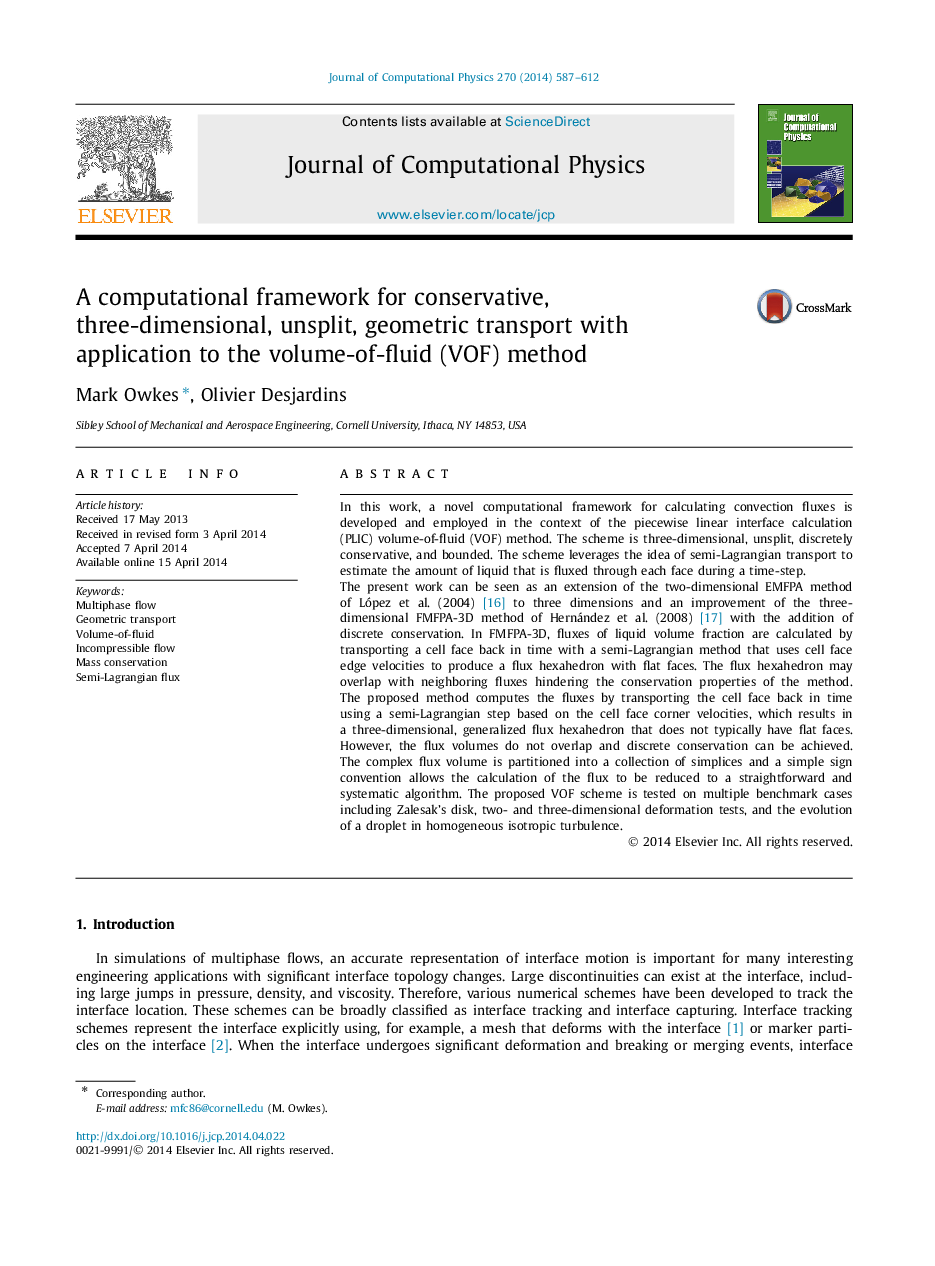| Article ID | Journal | Published Year | Pages | File Type |
|---|---|---|---|---|
| 6932638 | Journal of Computational Physics | 2014 | 26 Pages |
Abstract
The present work can be seen as an extension of the two-dimensional EMFPA method of López et al. (2004) [16] to three dimensions and an improvement of the three-dimensional FMFPA-3D method of Hernández et al. (2008) [17] with the addition of discrete conservation. In FMFPA-3D, fluxes of liquid volume fraction are calculated by transporting a cell face back in time with a semi-Lagrangian method that uses cell face edge velocities to produce a flux hexahedron with flat faces. The flux hexahedron may overlap with neighboring fluxes hindering the conservation properties of the method. The proposed method computes the fluxes by transporting the cell face back in time using a semi-Lagrangian step based on the cell face corner velocities, which results in a three-dimensional, generalized flux hexahedron that does not typically have flat faces. However, the flux volumes do not overlap and discrete conservation can be achieved. The complex flux volume is partitioned into a collection of simplices and a simple sign convention allows the calculation of the flux to be reduced to a straightforward and systematic algorithm. The proposed VOF scheme is tested on multiple benchmark cases including Zalesak's disk, two- and three-dimensional deformation tests, and the evolution of a droplet in homogeneous isotropic turbulence.
Related Topics
Physical Sciences and Engineering
Computer Science
Computer Science Applications
Authors
Mark Owkes, Olivier Desjardins,
